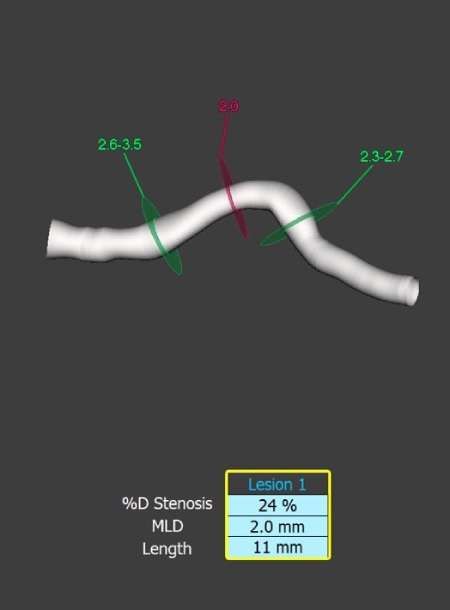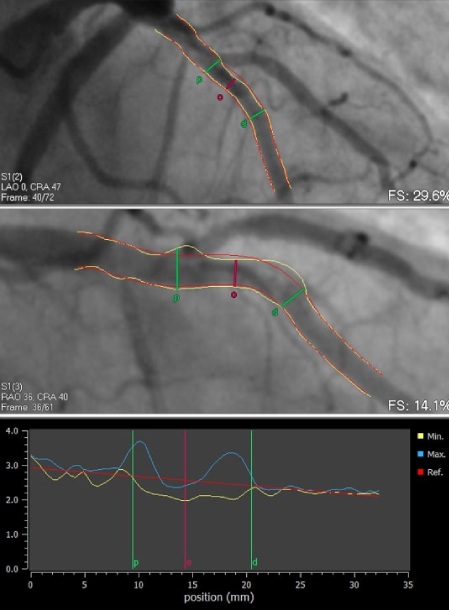

QCA Core Lab
Quantitative coronary angiography (QCA) is a valuable imaging technique that offers precise and reproducible measures of coronary artery diameters. The evaluation of mechanical interventional devices (like stents) and the long-term progression and regression of coronary atherosclerosis and Percutaneous Coronary Intervention (PCI) are all made possible by QCA. It is also particularly helpful for measuring the size of the vessel lumen and the reoccurrence of restenosis after coronary interventions.
Bifurcation Analysis
An innovative method for bifurcation analysis has been used by ClinNext. In addition to the traditional QCA, a coronary bifurcation can be examined as a single entity that includes both the angulation and the central bifurcation area. Both a six-segment and an eleven-segment bifurcation model can be used to evaluate the complete bifurcation segment.
ClinNext Core Lab provides 2D and 3D QCA. By creating a genuine geometric shape in the 3D space from two or more 2D X-Ray projections, inaccuracies in out-of-plane magnification and foreshortening are reduced. Analyzing challenging lesions and segment anatomy in 3D QCA provides superior results.
Key angiographic results / Services
- Minimum luminal diameter
- Reference diameter
- Percentage diameter stenosis
- Stenotic length
- Bifurcation angles

